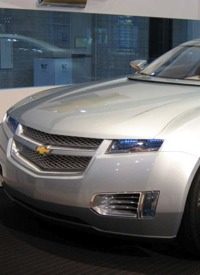
The economy has moved on and new industrial realities have reduced the overall importance of General Motors as a primary economic force in America. Still, as the crown jewel of the American automotive industry, General Motors at its 100th birthday remains an icon. And, it still employs a huge number of American workers among its 266,000 world-wide employees.
Despite its historic role and gargantuan size even today, GM is in trouble, facing mounting losses, a product line out of tune with the times, and a workforce that has saddled the company with mounting costs. Some have speculated that the company could find itself facing bankruptcy.
{modulepos inner_text_ad}
Over the last several years, GM’s leadership has worked hard to remedy the company’s mounting ills. A new contract with the UAW will reportedly save the company $3 billion per year, according to the Associated Press, "by shifting $46.7 billion in retiree health care expenses from GM’s books to a UAW-administered trust in 2010." That, plus a massive reduction in wages for new hires as compared to older workers accounts for the savings.
But it may not be nearly enough. The company posted staggering losses of $15.5 billion in the second quarter alone, bringing total losses for the last year and half to $57.5 billion. According to the Associated Press, the company "is burning more than $1 billion a month in cash" and "has more than $32 billion in long-term debt."
A large part of GM’s trouble stems from Japanese competition. Toyota, in particular, has established its new-found market leadership on a broad perception of quality and value in its products, and has been quick to market vehicles, like the Prius, that are more palatable to consumers wary of rising energy costs. By contrast, U.S. automakers like General Motors have been slower to react to new market realities, with assembly lines churning out trucks, SUVs, and minivans.
Though popular and profitable in previous years, sales of these larger vehicles have slumped. CNN reported that sales of trucks and SUVs were "down 19% through August, while passenger car sales fell 2%." According to the CNNMoney report, "full-size pickups like the Chevrolet Silverado and large SUVs like the GMC Yukon have notched double-digit percentage declines."
Facing that slump, GM is betting its future on a new electric car, the Volt. It may be a safe bet. No less than Burt Rutan, the aerospace pioneer whose visionary achievements include the constructing the Voyager around-the-world airplane and the SpaceShipOne spaceplane, is a fan of the forthcoming sedan. "I expect the Chevy Volt to be both a success and a transportation game-changer," Rutan told the New York Times.
Others, however, have taken a dim view of the Volt. "Rushing to deliver 60,000 electric vehicles per year poses a phenomenal risk…. I predict G.M. will end up building only a few thousand of them," Manahem Anderman, an electric car consultant, told the Times.
Whether or not the risk the company is taking on the Volt will pay off is one question. The other is whether it will come in time to have an impact. The new model, which could cost as much as $40,000 when it debuts, won’t be on sale until 2010. But by then, could it be a case of too little, too late, for an already ailing GM?



